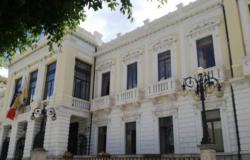“Over 3.5 million from the fund ministry to San Matteo and Bup. Also funding the Ship Museum and the Charterhouse”. Focusing on the cultural situation of Pisa, we highlight the distribution of the funds that the Ministry of Culture has decided to invest in the city’s state museums:
24 thousand euros to the museum of ancient ships for the “safety and repair of a water leak in the tank of the system serving the structure”. 70 thousand euros instead, to be spread over 3 years, for the “Archaeological restoration centre, ordinary and extraordinary conservation works of the finds, restorations to integrate the collections and repairs/replacement of instruments”. A commendable initiative but we must not forget that this museum was born in 2019 and was forgotten in the same year.
Note that it has always lacked a useful sign for potential users to see. Leaving aside the age-old issue that prevents the local administration from installing directional signs around the city, with which the flows towards the aforementioned museum could be aroused. What the issue is, however, is not known, perhaps the same one that still keeps alive the signs that indicate the way to go and see the excavation of the ships which has now been closed for several years. The museum also does not have a heating and cooling system, as reported on the sheets posted in front of the ticket office.
It is an imposing structure, whose inertia ends up nullifying any heating and cooling operation, if not implemented by systems of equally considerable dimensions.
The idea of allocating funds for the creation of a restoration center is extremely laudable but it is not a decoy. In fact, this is not an operation that will solve the real problems of the ship museum but it will have a significant cost. What will be the division of these 70 thousand euros? Given that the article states that they will also be used for “ordinary and extraordinary conservation work on the finds, restorations to integrate the collections and repairs/replacement of instruments”.
We then move on to the San Matteo museum. Also in the article we read that 419,040 euros will be invested in the three-year period, 250 thousand euros already in 2024, to continue with the “safety, restoration and recovery of unused spaces on the ground floor in order to increase the cultural offer of the museum” . The question that arises spontaneously: is there a valorisation strategy envisaged? There has always been talk in Pisa about the poor admissions that the structure manages but in fact no incisive action has ever been taken to reverse the trend. In an Italy that thinks of museums as a source of profit and with a view to earning money through tourism, what position does this national museum occupy? Perhaps none, it is to be hoped that the explanation reported on the Tyrrhenian Sea regarding the operations that will be carried out on the museum, presumably, also includes that of a rearrangement, which will replace choices that are now outdated and not very inclusive.
For the Palazzo Reale museum, work is planned to “secure the visit routes with renovation of the access platforms to the rooms and services for disabled people, reorganization of the museum spaces, review of the roofs for safety of the environments intended for storage and exhibition halls, revision of the internal and external fixtures for the anthropic safety of the building, disposal of the materials accumulated in the currently unused rooms which constitute a serious danger from fires and for the safety of visitors, staff and works contained in the museum”. All for the beauty of 270,260 euros.
We have to ask ourselves how many years this situation has been going on because, if there are actually situations of serious danger due to fires, then the laudable recovery effort necessarily takes over. It is also to be hoped that the “reorganization of the museum spaces” will also include a more modern rearrangement here, with adequate panels that will replace the cards placed in displays, which can be consulted one visitor at a time. Although to date the number of accesses does not make use so difficult for users. Always remember that the Palazzo Reale museum tells the history of the city of Pisa in a concrete way and perhaps deserves greater attention also, and above all, from the local administration, which sometimes gives too much space to its historical memory through the mere game of the bridge , which is also widely celebrated in the Palazzo Reale museum.
In short, Pisa remains the city of the Tower even today.
April 2024
CUB Pisa





